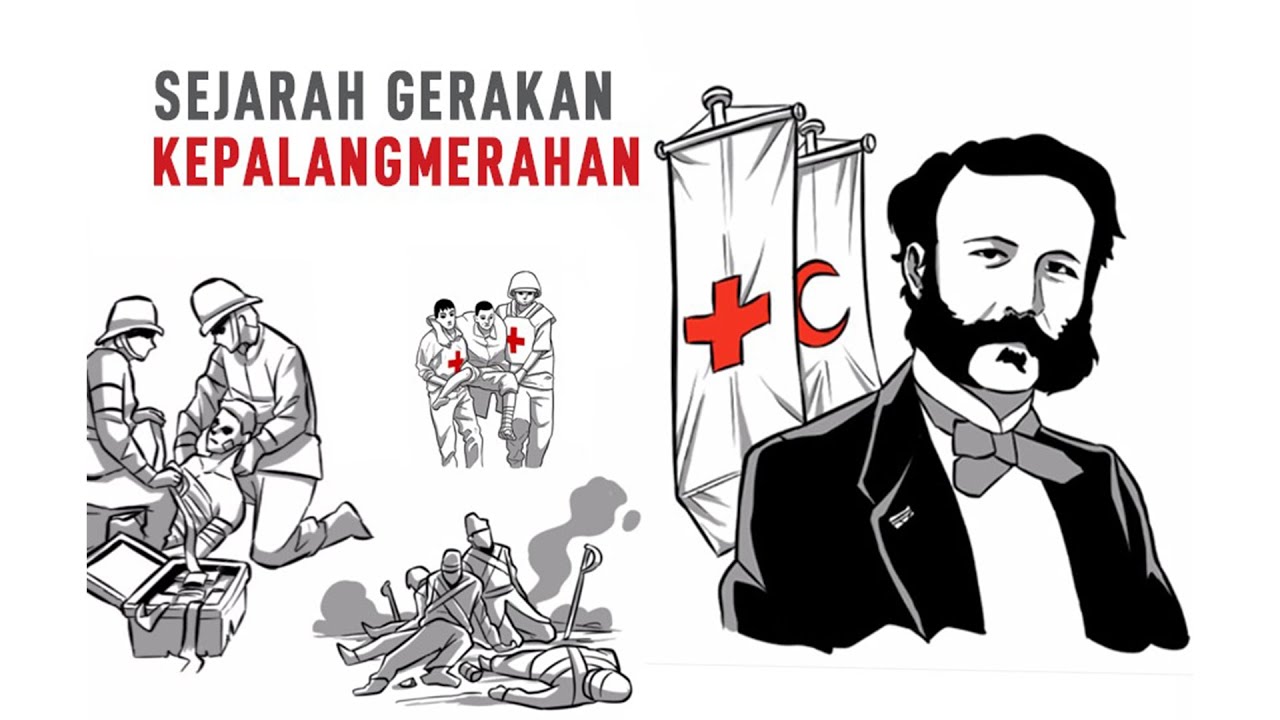Gerakan Kepalang Merahan
Summary
TLDRThe script provides an informative overview of the Indonesian Red Cross (PMI) and its international origins. It begins with a brief introduction to the concept of humanitarian organizations, then delves into the history of the Red Cross movement, starting from the pivotal Battle of Solferino in 1859, where the need for a neutral organization to aid war victims was recognized. It traces the formation of PMI, highlighting key moments such as its establishment in Indonesia in 1873 and the formation of the national body post-independence. The presentation emphasizes PMI's international recognition and its vital role in disaster relief and humanitarian aid.
Takeaways
- 😀 The speaker's name is Selvi Arivia from SMK Negeri 10 Surabaya, and she is presenting on the Red Cross Movement and PMI (Indonesian Red Cross).
- 😀 The Red Cross (PMI) is a humanitarian organization that operates in disaster response, blood donation, and first aid services.
- 😀 PMI is a legal entity under the law No. 1/2018 about Red Cross Affairs and operates in accordance with the 1949 Geneva Conventions.
- 😀 The global Red Cross movement began after the Battle of Solferino in Italy (1859), where humanitarian services were needed for the wounded and dying soldiers.
- 😀 Henry Dunant, a Swiss businessman, witnessed the battle and initiated the idea of forming an organization to help wounded soldiers, which led to the foundation of the Red Cross.
- 😀 Dunant's experience in Solferino inspired him to write the book *Memory of Solferino*, advocating for volunteer organizations and international agreements for the protection of soldiers and volunteers.
- 😀 The International Red Cross and Red Crescent Movement consists of three main components: the International Committee of the Red Cross (ICRC), the International Federation of Red Cross and Red Crescent Societies (IFRC), and national Red Cross societies.
- 😀 The ICRC, established in 1863, is a neutral, independent humanitarian organization that helps victims of armed conflicts.
- 😀 The history of PMI in Indonesia dates back to the colonial period, with its first formation in 1873 under the name Netherlands Red Cross India, which was dissolved during Japanese occupation.
- 😀 After Indonesia's independence, PMI was formally established on September 3, 1945, under the leadership of Drs. Muhammad Hatta and gained international recognition on June 15, 1950.
Q & A
What is the primary focus of the presentation?
-The presentation focuses on the history, significance, and role of the Red Cross (PMI) in Indonesia, as well as the international Red Cross movement and its humanitarian efforts.
What is the origin of the Red Cross movement?
-The Red Cross movement originated after the Battle of Solferino in Italy in 1859, when Henry Dunant, a Swiss businessman, witnessed the lack of medical care for wounded soldiers. His experience led to the creation of the movement.
What is the role of PMI in Indonesia?
-PMI, or Palang Merah Indonesia, is a humanitarian organization in Indonesia responsible for disaster response, blood donation activities, and first aid services.
What was Henry Dunant's contribution to the Red Cross movement?
-Henry Dunant's experiences during the Battle of Solferino led him to advocate for the establishment of a volunteer organization to provide care to soldiers and an international agreement to protect those who provided assistance during wars.
How did the Red Cross movement evolve internationally?
-The Red Cross movement evolved internationally with the creation of the International Committee of the Red Cross (ICRC) in 1863, the International Federation of Red Cross and Red Crescent Societies (IFRC) in 1919, and national Red Cross societies in various countries.
What was the role of the Netherlands in the development of the Red Cross in Indonesia?
-The Netherlands established the first Red Cross organization in Indonesia in 1873, known as Netherlands Indies Red Cross, which was later disbanded during the Japanese occupation.
When was PMI officially recognized internationally?
-PMI was officially recognized by the International Red Cross Committee on June 15, 1950, after being formed as the Indonesian national Red Cross organization on September 17, 1945.
What is the significance of the Geneva Conventions for the Red Cross?
-The Geneva Conventions, particularly the 1949 version, set the legal framework for the protection of wounded soldiers and humanitarian aid workers, and they form the basis for international humanitarian law that governs the activities of the Red Cross.
How does the Red Cross provide disaster relief?
-The Red Cross provides disaster relief by offering emergency medical services, blood donations, and immediate aid during natural disasters or emergencies, often working in collaboration with local governments and other humanitarian organizations.
What are the three main components of the International Red Cross and Red Crescent Movement?
-The three main components of the movement are the International Committee of the Red Cross (ICRC), the International Federation of Red Cross and Red Crescent Societies (IFRC), and national Red Cross or Red Crescent societies in each country.
Outlines

This section is available to paid users only. Please upgrade to access this part.
Upgrade NowMindmap

This section is available to paid users only. Please upgrade to access this part.
Upgrade NowKeywords

This section is available to paid users only. Please upgrade to access this part.
Upgrade NowHighlights

This section is available to paid users only. Please upgrade to access this part.
Upgrade NowTranscripts

This section is available to paid users only. Please upgrade to access this part.
Upgrade NowBrowse More Related Video

VIRTUAL MOP EPISODE 2 - SEJARAH GERAKAN PALANG MERAH DAN BULAN SABIT MERAH INTERNASIONAL

MATERI KEPALANGMERAHAN UNTUK PMR : SEJARAH GERAKAN, LAMBANG, TUGAS DAN FUNGSI

Sejarah Gerakan Palang Merah dan Bulan Sabit Merah

LAMBANG KEPALANGMERAHAN

Sejarah Lambang Palang Merah, Bulan Sabit Merah dan Kristal Merah

Profil PMI - Kenali PMI
5.0 / 5 (0 votes)